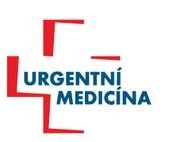INTRODUCTION
- Contents
- Editorial – Jana Šeblová
EMERGENCY DEPARTMENTS
- Direct transport of hemodynamically stable patient with polytrauma from the EMS ambulance to CT shortens the time to diagnostics of life-threatening injuries – Miroslav Durila, Milan Grund, Jan Beroušek, Evžen Beitl, Renata Pipková, Tomáš Vymazal
DIAGNOSTIC METHODS
- Critical evaluation of ultrasound diagnostics of pneumothorax – Roman Škulec, Tomáš Pařízek, Barbora Pakostová, Marcela Bílská, Vladimír Černý
PHYSIOLOGY AND EMERGENCY MEDICINE
- Capnometry – more than just the value of CO2 – David Astapenko, Vladimír Černý
GUIDELINES
- Approaches to management of multiple victim incident of patients with burn trauma in the Czech Republic – Bohumil Bakalář, Eva Smržová, Robert Zajíček, Marek Brosche, František Duška, David Frejlach, Jaroslava Hejdová, Jiří Knor, Josef Škola, Václav Vobruba
EDUCATION
- Possibilities of teaching the organizations of the Integrated Rescue System in the Department of forensic medicine – Jan Frišhons, Adam Strnad, Jan Krajsa
- Fished out from a social media network – three case reports based on ECG – Tomáš Veleta, Ondřej Rennét, Jana Šeblová
- How to pass the specialisation exam in emergency medicine? – Katarína Veselá, Jana Šeblová, Jana Kubalová
INFORMATION
- Around the world with EMS – exhibition of ambulance cars´ models from 40 countries – Anatolij Truhlář
- EUSEM 2020 virtual – Jana Šeblová
- Jan Koutenský, MD, passed away – Jiří Knor
- Ilja Deyl, MD – congratulations on 70th anniversary
- 11th university term of EMS management dedicated to Jiří Staňa, MD – Christoph Redelsteiner
- Simulation as a modern tool in health care professionals´ education – František Dolák, Andrea Hudáčková
ABSTRAKTY
DIRECT TRANSPORT OF HEMODYNAMICALLY STABLE PATIENT WITH POLYTRAUMA FROM THE EMS AMBULANCE TO CT SHORTENS THE TIME TO DIAGNOSTICS OF LIFE-THREATENING INJURIES
Miroslav Durila, Milan Grund, Jan Beroušek, Evžen Beitl, Renata Pipková, Tomáš Vymazal
Abstract
Introduction: According to recent studies, early diagnosis of lifethreatening injuries using CT scans in patients with polytrauma can reduce their mortality. For this reason, it is important to look for ways to improve the management of polytrauma patient admission and reduce the time from patient admission to completion of CT scans. The aim of this study was to determine whether the transport of a hemodynamically stable patient with polytrauma directly from an EMS ambulance to a whole-body CT can statistically significantly shorten the time to completion of CT examination compared to the standard procedure where the patient is taken from the paramedic crew to the emergency department.
Method: In this study, we evaluated the time to completion of whole-body CT (time of venous phase of contrast examination) in two groups of hemodynamically stable and intubated patients with polytrauma. In the first group, the patient was transported from the paramedic vehicle (car or helicopter) accompanied by the paramedic team and the hospital trauma team directly to the CT examination, where the patient was handed over. In the second group, the patient was transported to the emergency department, where the patient was taken over and subsequently the patient was transported to a CT examination accompanied by a hospital trauma team.
Results: We analyzed data from 62 patients. The average time from taking the patient from the emergency medical crew to performing a whole-body CT examination in the first group (21 patients) was 10 ± 2.3 minutes (min 6, max 14 minutes). In the second group (41 patients), this time was significantly longer 31 ± 12.6 minutes (min 15, max 59 minutes). This difference was statistically significant (p <0.0001).
Conclusion: Transport of a hemodynamically stable patient with polytrauma directly to the CT examination accompanied by the emergency medical crew and the hospital trauma team shortens the time until the final diagnosis of potentially life-threatening injuries.
Key words: whole body CT examination – E-FAST – polytrauma
CRITICAL EVALUATION OF ULTRASOUND DIAGNOSTICS OF PNEUMOTHORAX
Roman Škulec, Tomáš Pařízek, Barbora Pakostová, Marcela Bílská, Vladimír Černý
Abstract
Point-of-Care ultrasound has been considered a reliable method in the diagnosis of pneumothorax in emergency and intensive care medicine. However, several ultrasound findings which may reduce the reliability of the examination have been documented. In this article, we summarize a critical evaluation of the reliability of separate ultrasonographic signs of pneumothorax in the light of recent literature and our experience.
Key words: ultrasound – pneumothorax
CAPNOMETRY – MORE THAN JUST THE VALUE OF CO2
David Astapenko, Vladimír Černý
Abstract
Capnometry is a simple, non-invasive and reliable method that provides the value of exhaled carbon dioxide (EtCO2) concentration. Not only the EtCO2 value itself is beneficial, but also its graphical representation over time – the capnographic curve. Capnometry provides useful information about the patient’s cardiopulmonary apparatus: adequate minute lung ventilation, cardiac output, airway obstruction, and dead ventilation. Capnometry further increases the safety of artificial lung ventilation, reliably predicts the position of the endotracheal cannula in the airways and increases the effectiveness of cardiopulmonary resuscitation and allows with a high degree of probability to assess the return of spontaneous circulation during resuscitation.
Key words: capnometry, artificial ventilation, cardiopulmonary resuscitation
POSSIBILITIES OF TEACHING THE ORGANIZATIONS OF THE INTEGRATED RESCUE SYSTEM IN THE DEPARTMENT OF FORENSIC MEDICINE
Jan Frišhons, Adam Strnad, Jan Krajsa
Abstract
Autopsies and demonstrations of morphological findings have also been used for centuries to gain valuable knowledge that will be etched in most students‘ memory for the rest of their lives. Theoretical teaching, practice of life-saving procedures and demonstration of morphological findings in forensic medicine has provided students from the IRS for several years with a comprehensive view of some injury mechanisms, life-saving procedures and dead body handling. Teaching is designed to be understandable both for students with basic knowledge of somatology and without previous knowledge/information.
Key words: Demonstration of morphology findings – Integrated Rescue System – education – life-saving procedures – CPR
